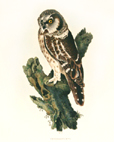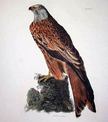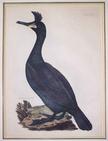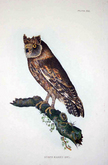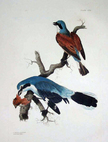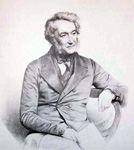
 |
(Click images to enlarge and for purchase information.) Want to know more about prints? |
||||||||||||||||||
| Prints are from Illustrations of British Ornithology (1821-1834, 1841) and are approximately 20.5" x 25.5" in size.
"Prideaux John Selby was a landowner and squire with ample leisure to observe the animals, birds, insects and fish on his property and in the surrounding Northumbrian country-side. He was a keen sportsman equally good with rod and gun,” to quote Christine Jackson. A friend, contemporary and encourager of John James Audubon, Selby subscribed to Audubon’s work and once took a drawing lesson from Audubon even though as Jackson states “Selby was very gifted as an artist, and the two volumes of Illustrations of Ornithology 1821-34 are outstandingly beautiful. The cool, classical quality of Selby’s plates belongs to the age of elegance.” Selby’s Illustrations…. was the most lavish work, with the largest plates ever done on British birds. Selby, like his predecessor Eleazar Albin, etched his own plates, his name being found on most of his prints. Selby was not only an outstanding ornithologist, but also an entomologist, and arboriculturalist who had a good knowledge of fishes and plants. He illustrated his own book, A History of British Forest Trees 1841-42 and collaborated with naturalist, Sir William Jardine, in publishing Illustrations of British Ornithology.1826-43 and authored two volumes of Jardine’s expansive Naturalist Library 1833-43. Selby lived in the tradition of the 18th century all around naturalist.
He enjoyed the life of a country gentleman and held the offices of
Magistrate, Deputy lieutenant and High sheriff of Northumberland.
He was elected a fellow of the Royal Society of Edinburgh and of the
Linnean Society of London. His 643 acre estate Twizell House near
Belford, Northumberland was not far from the North Sea coast and became
a stopping off place for naturalists heading to and from Edinburgh.
Audubon always looked forward to visiting this complete, learned and
gracious Christian gentleman and his hospitable wife and children. |
|||||||||||||||||||

